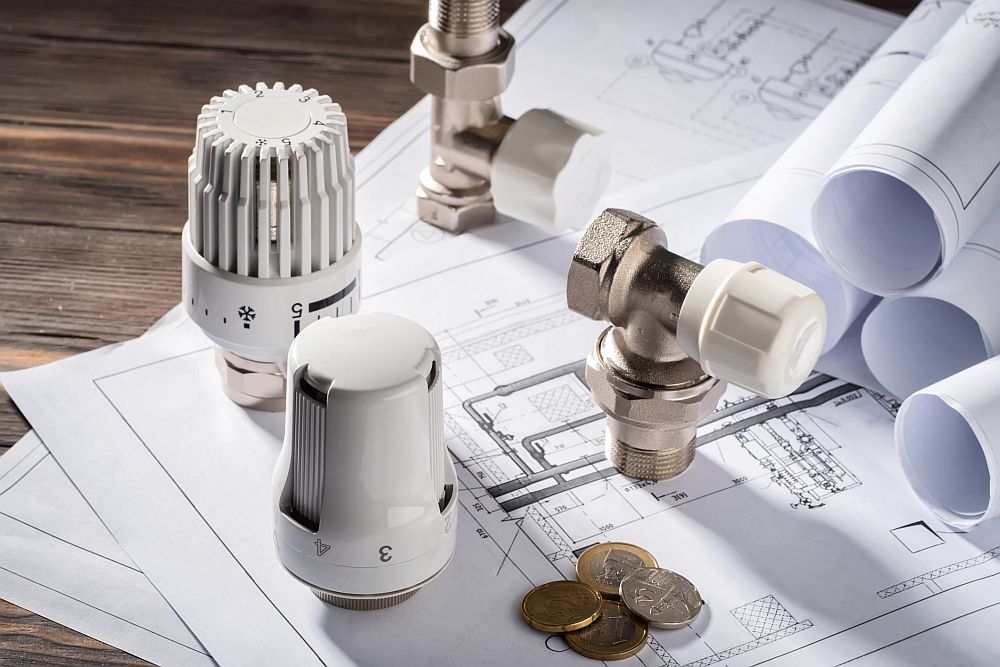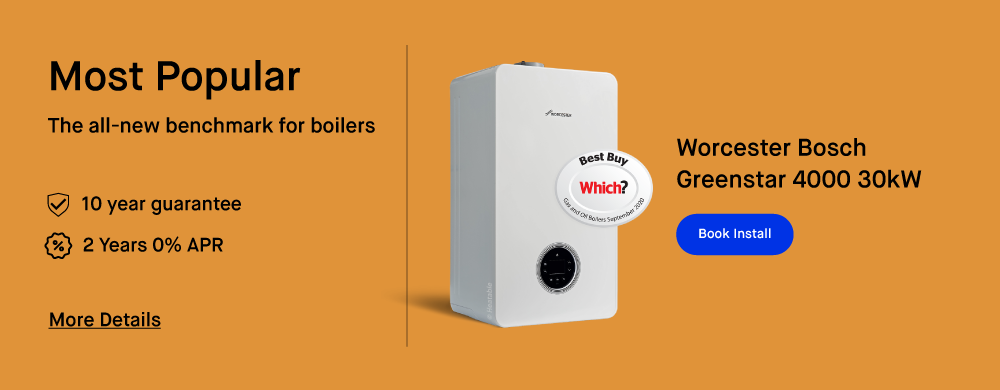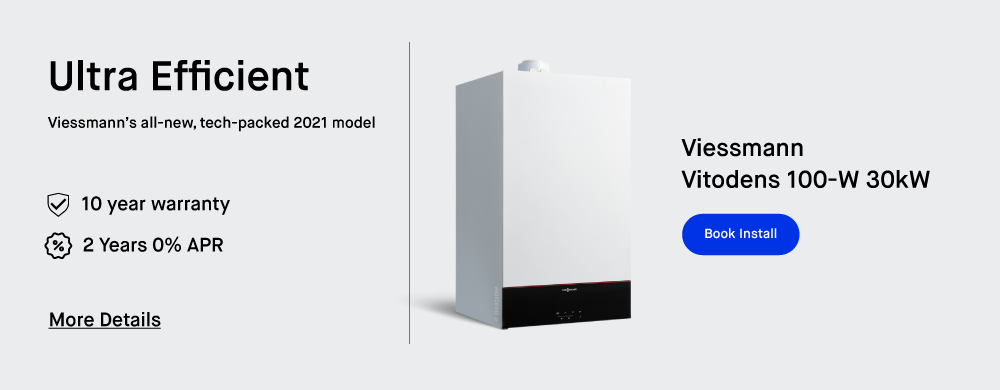How to Use a Lockshield Valve to Fix a Cold Radiator
On frigid winter nights, there’s nothing worse than a stubbornly cold radiator with no apparent fix. You may have Googled ‘how to fix a cold radiator’, had a go at bleeding it, and gotten no closer to making it warm again. Then, you likely read about lockshield valves and balancing radiators, but got overwhelmed by the seemingly complex process.
But the good news is — your radiator lockshield valve isn’t rocket science. And in this brief guide, we will do our best to demystify lockshield valves and outline the steps for balancing your radiator. Hopefully, this will be enough to resolve your issue and get your radiator humming along and keeping toasty.
Tired of having no hot water? Read on!

What Is a Lockshield Valve (LSV)?
A lockshield valve (LSV) is 1 of 2 radiator valves that control the hot water flow through each radiator. It’s typically placed on the return pipe, and derives its name from the plastic cap that protects the radiator valve from being accidentally turned.
If your home is equipped with Thermostatic Radiator Valves (TRVs), the latter automatically regulate the flow (supply) of hot water to the radiator. Meanwhile, the lockshield valves control the return.
However, if you don’t have TRVs, the lockshield valve will work in concert with the manual wheelhead valve to keep you radiator balanced. The wheelhead valve lets you manually regulate how much water enters the radiator from the flow pipe. On the other hand, the lockshield valve remains in a fixed position, and controls how much water escapes the radiator through the return pipe.
Note that these valves are interchangeable — all you need to do is swap the lockshield cap for the wheelhead cap.
That said, we would urge you not to make this switch. That’s because the radiator valve controlling the return water should remain in a locked position unless you are rebalancing your radiators — and this is why it’s usually protected by the lockshield cap.
How to Adjust the Lockshield Valve
If you need to adjust the lockshield valve to balance your radiator, you can usually remove the cap by pulling it or unscrewing it. Once the cap has been removed, the valve looks a little like the end of a spindle. You can usually turn it by hand, but if the radiator is older, you might find you need an adjustable spanner to turn it.
How to Tell if the Radiator Valve Is Open or Closed?
This is a common question, but the answer is dead simple. Turn it all the way to the left, and if it won’t go anymore, it’s closed.
Otherwise, it’s some degree of open. If only everything were so easy!
Balancing Radiators vs Bleeding Radiators
Bleeding a radiator is a DIY task that most people are familiar and even comfortable with. It’s done to allow trapped air to escape the radiator, thus resolving a common issue that otherwise keeps radiators from filling properly and staying hot. All you need to bleed a radiator is the radiator key, some cloth to catch water, and about 10 minutes of your time.
But more often than not, trapped air isn’t the culprit behind your cold radiator. An unbalanced heating system is the far more common problem.
In an unbalanced heating system, hot water doesn’t flow evenly through all your radiators. This means some radiators heat up slower than others. If bleeding doesn’t solve your problem, the system is probably unbalanced.
How to Balance Your Radiators to Fix a Cold Radiator Problem

To prepare for balancing your radiators, you’ll first need to gather a few tools. So before we begin, pop out to your shed and bring in the following:
- A lockshield valve key (if you don’t have one, use the cap from the wheelhead valve or a spanner to turn the lockshield valve)
- A radiator bleed key
- A screwdriver
- A digital thermometer or multimeter with thermometer
Depending on the type of radiators valves you have, you may not need all these tools. But to balance your radiators as quickly and smoothly as possible, it’s best to have these items handy.
Step 1: Switch Off Your Central Heating
First, you’ll want to wait until the radiator is cooled off. But how to turn off a radiator? In most cases, you can control it with a central thermostat, but attenuating the thermostatic valve of your radiator (the one with dialed numbers) works to the same effect.
Although it may seem like a waste of time, this step will help you pinpoint radiators that heat up slower than others.
Step 2: Bleed Your System
As we’ve explained, bleeding your radiators solves a separate issue — it helps release trapped air. But if you’ve got air in your radiators, it can also affect the speed at which they heat up.
If you haven’t recently done so, it may be worth bleeding all your radiators to eliminate this potential problem (you’ve got plenty of time while your system cools down, anyway).
Step 3: Prepare Your Radiator Valves
To rebalance your radiators, you will need to turn your lockshield valves, so now is a great time to remove the caps.
As we have already explained, some of these are push caps, some are screw caps, but some may need a screwdriver. Unless you’ve changed these caps in the past, most likely all your radiators will have the same type.
Regardless of type of caps you have, removing them should be a simple job and only take a few minutes.
Step 4: Open Your Radiator Valves
Once the system has cooled down, you will have to open the lockshield valve. To do this, simply turn in an anti-clockwise direction (to the left). You can do so by hand; but if your valves are a bit stiff, use your lockshield valve key, a spanner, or the wheelhead valve cap instead.
Step 5: Switch the Heating on Measure Radiator Temperatures
After you’ve opened all the radiator lockshield valves, it’s time to switch your central heating back on. And as the system fires up, you will need to measure the speed with which each radiator gets hot.
This is where enlisting the help of friends and family gets useful — an all-hands-on-deck approach will spare you the hassle of running around trying to note radiator temperatures yourself.
Typically, the radiators closest to the boiler get hot first. But if your system is unbalanced, this may not be the case. At the end of this step, you should have a list ranking all your radiators, from the quickest to get warm to the slowest.
Step 6: Start Rebalancing with the Fastest-heating Radiator
The rebalancing process begins with the fastest-heating radiator in your house. Close the lockshield valve on this radiator by turning it in a clockwise (right) direction. Once it is closed, open it up again by exactly a quarter of a turn.
Step 7: Measure the Temperature and Adjust the Radiator Lockshield Valve
- Now use your digital thermometer (or multimeter) to take a temperature reading from the pipework next to the lockshield valve. This is the return pipe.
- Next, measure the temperature from the pipework on the opposite side of the radiator, next to the TRV or the wheelhead valve. This is the flow pipe.
- Keep turning the lockshield valve until until the difference between the 2 temperature readings is exactly 12°c. This process can take a fair few minutes, so be patient.
Once the first radiator is balanced, you’ll have to repeat the process with all the radiators in your home. It’ll take quite a bit of time, especially with those troublesome radiators that don’t heat fast enough.
Note that you may find yourself tweaking the lockshield valve back-and-forth a bit before getting the correct temperature difference (12°c) between the flow and return pipes.
Once you’ve rebalanced every radiator in your home, hot water from your boiler will reach them at equal speed and your house should warm up at the same time.
What to Do if Balancing Radiators Doesn’t Solve the Problem?
Rebalancing radiators resolves most cold radiator issues we’ve come across. However, if rebalancing your radiators doesn’t fix the issue of cold radiators, there could be another underlying problem.
The best thing to do at this stage is to consult with a plumber or heating engineer, or call the emergency helpline of your boiler cover company, if you’re covered by a quality boiler cover plan. With any luck, there might be a simple issue with your pipes, your radiators, or your boiler that they can fix with a few adjustments or a new part.
But in the worst-case scenario, you may need to invest in a new boiler.
How to Get the Cheapest Boiler and the Lowest Installation Costs
Learning that you need a new boiler can be a real blow. Most people believe boilers are expensive to buy and costly to install, and will be bracing themselves for a bill for several thousand pounds.
It doesn’t have to be that way. While boilers can be expensive to buy and costly to fit, there is a website that can offer you a great deal on a high-quality new boiler and give you great installation rates, too.
We recommend you try Heatable, a unique online boiler quotation and installation service. They saw a gap in the market for a fast online boiler quotation and installation site, and teamed up with manufacturers to provide the best prices, even for top brands like Worcester Bosch or Viessmann.

When you visit the Heatable, you will be asked to fill in an anonymous, 90-second form containing all the details about your home and existing heating systems. The online calculator will then offer you the most competitive quotes for your individual home and heating needs.

If you are still concerned about the upfront costs of buying a new boiler, Heatable also offer some exceptional finance options.
Don’t Just Take Our Word for It
If you want to see what some other customers think of Heatable before trying them, look no further than Reviews.co.uk.
Heatable has a trust score of 4.92 out of 5 from more than 2,000 reviews, with 99% on-time deliveries and 98% for accurate and undamaged orders.
This proves Heatable is one of the most trusted boiler sales and installation sites in the UK. And we may add, they have the best prices, too.
Radiator Lockshield Valves: Summary
A lockshield valve is the part of a radiator you look at every day without ever really knowing what it’s for. In this article, we have answered this question and also explained how important a lockshield valve is for balancing radiators.
Can you think of any other good uses for the lockshield valve not discussed in this guide? How was your experience of balancing your radiators? Do you know any other tips for fixing cold radiators?
We always welcome the input of readers in trying to solve these everyday problems, so why not share your thoughts and experiences in the comment box below?